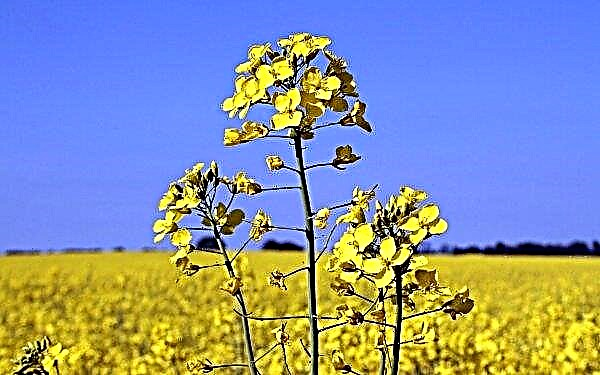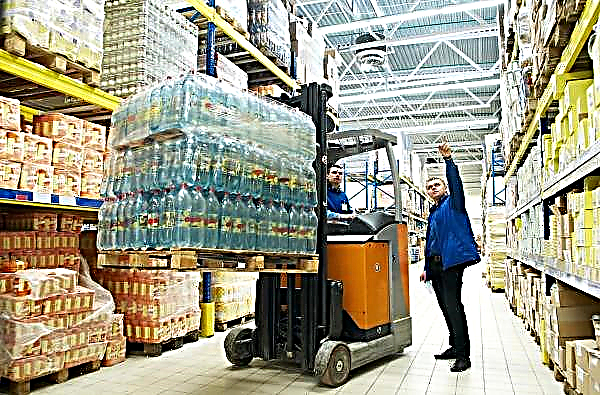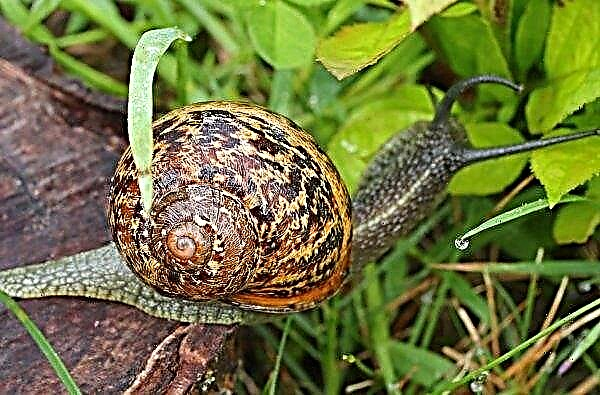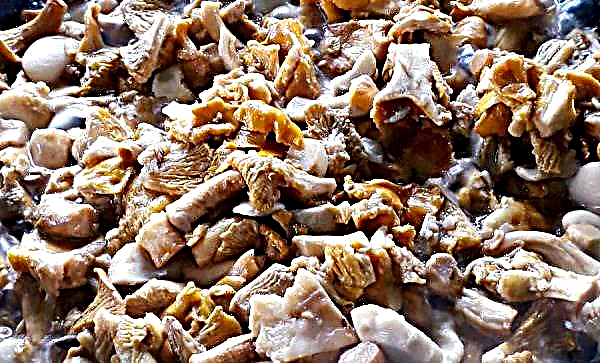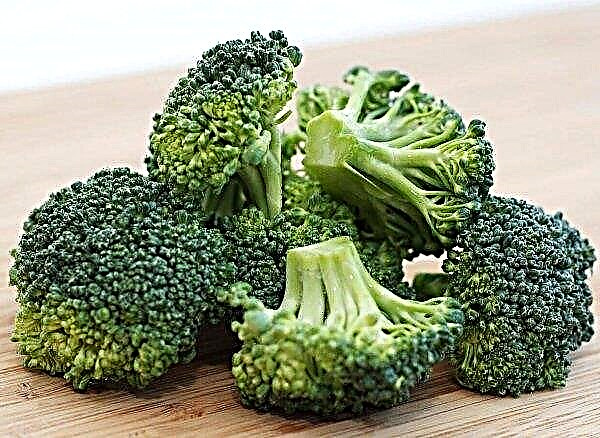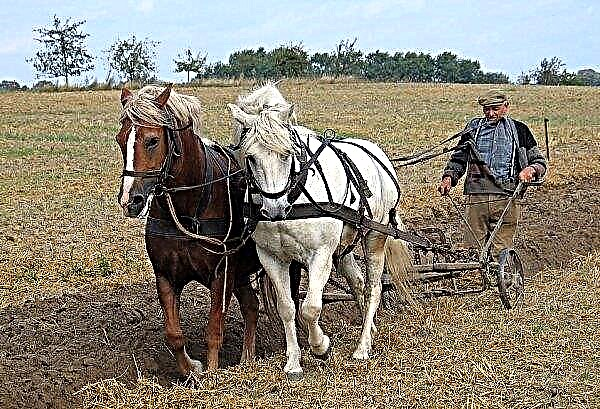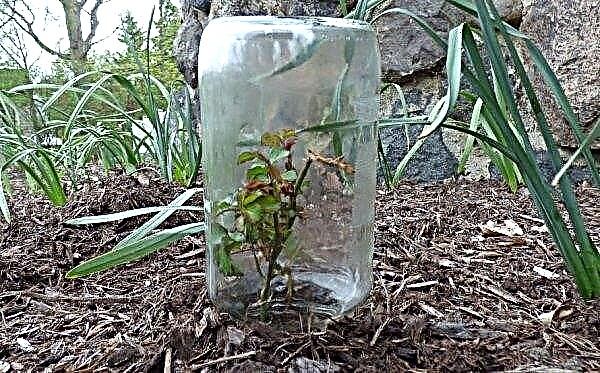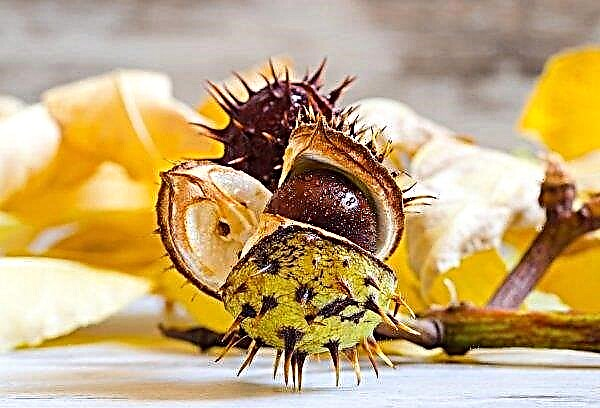Yellow leaves of cucumbers bother all vegetable growers who have encountered a similar problem. There are a number of factors that lead to this state of the plant, and before treating the bush, you need to understand all the intricacies of this matter.
Why do cucumbers turn yellow leaves
Agronomists identify several reasons why the leaves of cucumbers turn yellow and dry. These include natural processes, errors in care, pest attack and disease.
Did you know? The largest producers of cucumbers in the world are China, Russia and Turkey.
Natural causes
Yellowing foliage in conjunction with the end of fruiting may indicate the end of the growing season. Cucumbers are annual plants, and by the end of growth they wilt. First, the leaves on the lower part of the stem begin to turn yellow and dry, after which the symptoms spread to the rest of the leaf plates and stems.
Improper care
Often the reason for changing the color of the leaves to yellow is a violation of the rules for growing bushes. Dangerous care errors include the following:
- Lack of light. Such a reaction is possible if you do not provide the plant with good lighting and obscure the bushes.
- Exposure to direct sunlight. The bright light, which is so important for cucumbers, should be diffused. This is especially true for cucumbers grown in a greenhouse. In this case, a sunburn is likely - due to evaporation of moisture on the leaves, condensation accumulates, through which the sun's rays burn the foliage. A similar situation is also possible when moistening the green part of the plant, which is why it is recommended to irrigate only the soil at the base of the stem and only in the morning or evening.
- Inadequate watering. Cucumbers love abundant irrigation of the soil 1 time in 2-3 days. The hotter, the more often you need to water the bushes. If the plant does not have enough moisture, the leaf blades dry out.
- Excessive moisture. An unpleasant situation occurs in the case of excessive moisture. From stagnation of water in the soil, the rhizome begins to rot, then decay spreads to the stems, and the leaves acquire a pronounced yellow hue.
- Mineral deficiency. A common cause of problems is a lack of nutrients, namely nitrogen, phosphorus and potassium, which are important for cucumbers. A similar situation occurs when the gardener either does not feed the plant, or does not contribute enough funds. With a lack of nitrogen, the lower leaves turn pale and the ovaries fall, a lack of phosphorus is indicated by wrapping the leaves up and the yellow tint closer to red, and a deficiency of potassium is manifested by drying and twisting the edges inward.
- Low humidity. Dry air significantly affects the condition of the cucumber bush. If the moisture level drops below 75%, the leaf plates begin to dry out and curl.
- Low temperature. The appearance of yellow foliage is possible if the air temperature drops sharply to + 15 ° C and below. It is also dangerous if the thermometer column is kept at such a level for a long time and, as a result, the hypothermia of the soil begins.
- Watering with cold water. To hypothermia and, as a consequence, yellowing of the leaves, can lead to watering with cold water. Moisten the soil should only be well-warmed up water.
- Damage to the roots. Sometimes vegetable growers do not plant seedlings too neatly in a permanent place and loosely loosen the soil. As a result, mechanical damage to the rhizome may appear. After this, the plant cannot conduct a full-fledged life activity and spends energy on restoring the root system. In this case, leaf plates that acquire a yellowish hue suffer.

Pests and diseases
An extremely dangerous reason for changing the color of foliage is the presence of pests on the bush or the spread of diseases.
Did you know? The ancient Greek physician Hippocrates used cucumbers as a medicine for treating patients.
The most common pests that can affect the condition of the bush include the following insects:
- Whitefly These are small whitish insects no more than 1.8 mm long with two pairs of wings. They are attached to the bottom of the sheet and begin to suck out juices from it, which leads to yellowing in the form of spots.
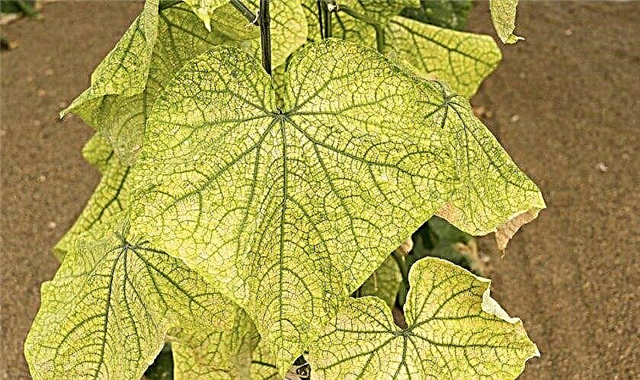
- Aphid. With the spread of aphids, the edges of the leaves fold, and the plates themselves begin to turn yellow. On their inner side, insects are several millimeters in size, most often green.
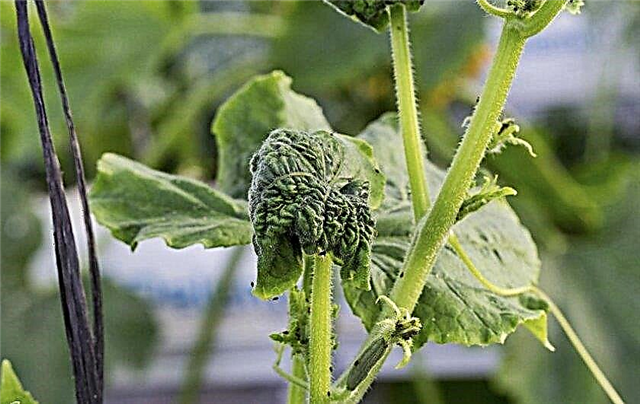
- Spider mite. These almost imperceptible insects with a diameter of up to 0.6 mm can be determined by the presence of a thin spider web that adheres to the leaf. Like a whitefly, these pests suck out the juices from the plant, which leads to the appearance of spots of a yellowish tint.
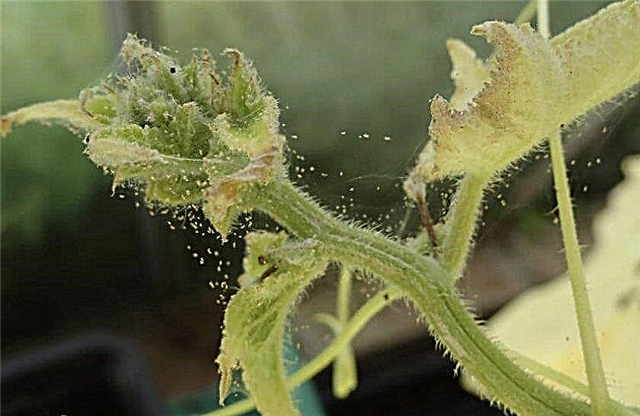
- Anthracnose. A symptom of this disease is the appearance of yellow-brown spots on leaf plates with thin cracks. Also, such lesions can be seen on the shoots and fruits.
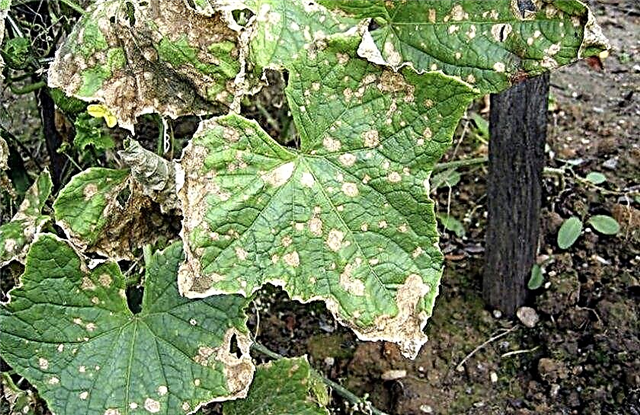
- Powdery Mildew It is manifested not only by yellowing and twisting of foliage, but also by the appearance of a whitish coating, similar to flour ..
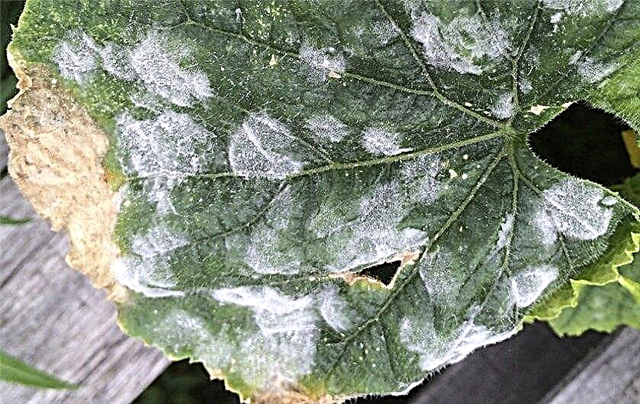
- Peronosporosis (downy mildew). The onset of this disease is marked by the appearance of many small yellow spots on the leaves. If you do not start treatment, that after a few weeks, the affected areas will turn brown, begin to dry and fall off.
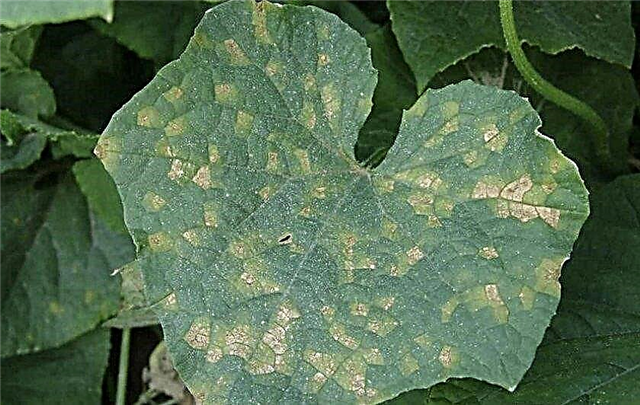
- Gray rot. The areas affected by the fungal pathogen gradually turn yellow and dry.
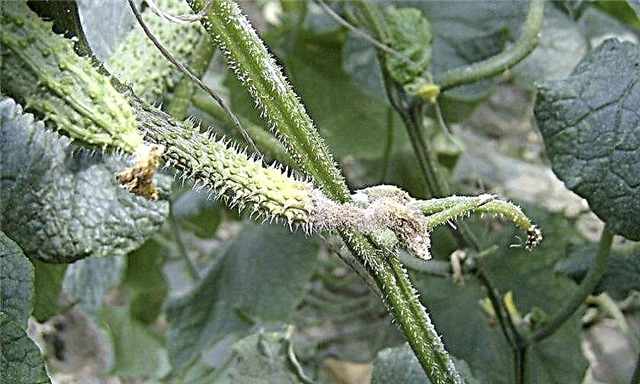
Viral diseases can also cause bright yellow on the foliage. Thus, a dangerous mosaic disease appears, requiring immediate intervention.
Important! Pests can spread fungal and viral infections. For this reason, when insects are found in the garden and after their removal, the plant should be carefully monitored.
What to do and what folk remedies to process cucumbers
To determine what to do, you need to identify the cause of this condition of the bush. You need to resort to treatments in the following cases.
- Nitrogen deficiency. It is necessary to spray with a urea solution (1 tsp. To 5 l of water).
- Phosphorus deficiency. Sprayed once with infusion of superphosphate (1 h. Funds in 10 l of water, insist 24 hours).
- Potassium deficiency. It is necessary to treat the tops with potassium sulfate (1 teaspoon of substance per 10 liters of water).
- Fungal diseases. Affected parts must be removed. Further, treatment is carried out with any systemic fungicide. An excellent option would be the Bordeaux liquid popular with agronomists.
- Pests. Insects are removed with a sponge with soapy water, leaves with lesions are cut off. Following this, they resort to the use of an insecticide, for example, the drug Actellic.
 There are also several folk remedies that treat the plant with the appearance of the first symptoms of yellowing.
There are also several folk remedies that treat the plant with the appearance of the first symptoms of yellowing.- Kefir solution. To 10 liters of water add 2 liters of kefir and spray bushes with this product. Kefir can be replaced with whey.
- Onion infusion. 1 cup onion peel insist in 3 l of water for 12 hours. Next, you need to drain the liquid and squeeze the husk. 1 part of such a concentrate is mixed with 4 parts of water. This product is sprayed with tops and watered the soil.
- Infusion of ash. Within 48 hours, you need to insist a mixture of 1 liter of water and 3 tbsp. ashes. The tool is used once by spraying.
- moderate or increase watering;
- heat water for irrigation;
- raise the temperature to +20 ... + 24 ° С in the greenhouse;
- increase humidity to 75–90%;
- adjust lighting and provide bright indirect light.
 After the diagnosis of viral damage, you need to remove the affected areas as soon as possible. If a large part is sick, the plants are uprooted.
After the diagnosis of viral damage, you need to remove the affected areas as soon as possible. If a large part is sick, the plants are uprooted.Important! Vegetables cannot be planted for 4 years at the place of growth of the mosaic-affected cucumbers.
Preventative measures
In order to grow a healthy plant, it is necessary to resort to preventive measures in advance:
- plant a crop every time in a new place, maintaining optimal crop rotation;
- watering should be carried out only with warm water once every 2-3 days; in the heat, you can carry out the procedure daily;
- maintain optimal temperature (during the day - +20 ... + 24 ° С, at night - +18 ... + 22 ° С) and humidity (75–90%);
- avoid shading or bright direct rays;
- water only under the root;
- feed bushes with mineral and organic fertilizers, saturating the soil with sufficient amounts of phosphorus, nitrogen and potassium for vegetation;
- to prevent fungal diseases with fungicides, for example, Bordeaux liquid.

Yellow leaves in cucumbers can be the result of one of many problems. With proper treatment, the grower will surely be able to save the plant and take off a rich and healthy crop.








